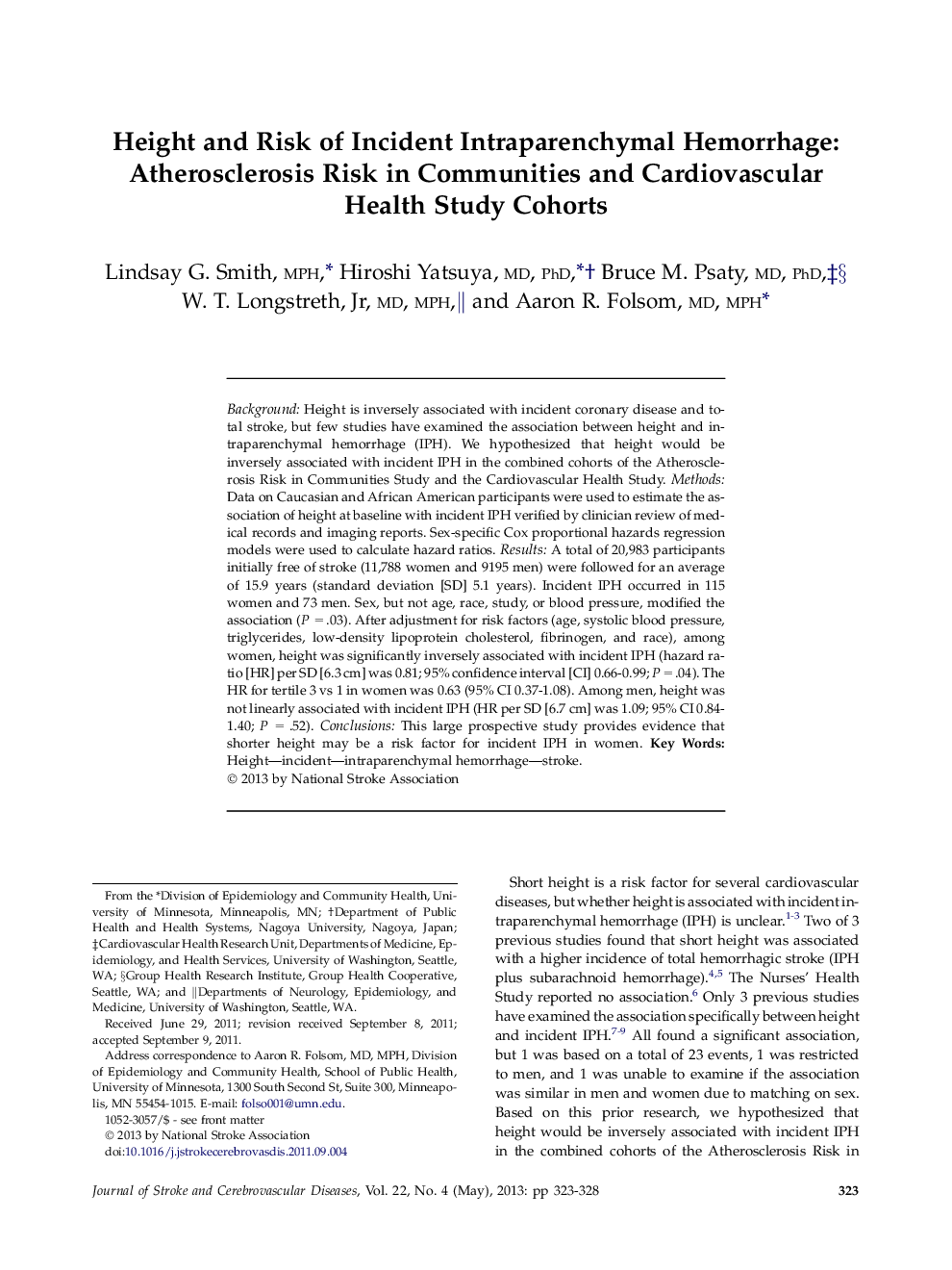| Article ID | Journal | Published Year | Pages | File Type |
|---|---|---|---|---|
| 2710809 | Journal of Stroke and Cerebrovascular Diseases | 2013 | 6 Pages |
BackgroundHeight is inversely associated with incident coronary disease and total stroke, but few studies have examined the association between height and intraparenchymal hemorrhage (IPH). We hypothesized that height would be inversely associated with incident IPH in the combined cohorts of the Atherosclerosis Risk in Communities Study and the Cardiovascular Health Study.MethodsData on Caucasian and African American participants were used to estimate the association of height at baseline with incident IPH verified by clinician review of medical records and imaging reports. Sex-specific Cox proportional hazards regression models were used to calculate hazard ratios.ResultsA total of 20,983 participants initially free of stroke (11,788 women and 9195 men) were followed for an average of 15.9 years (standard deviation [SD] 5.1 years). Incident IPH occurred in 115 women and 73 men. Sex, but not age, race, study, or blood pressure, modified the association (P = .03). After adjustment for risk factors (age, systolic blood pressure, triglycerides, low-density lipoprotein cholesterol, fibrinogen, and race), among women, height was significantly inversely associated with incident IPH (hazard ratio [HR] per SD [6.3 cm] was 0.81; 95% confidence interval [CI] 0.66-0.99; P = .04). The HR for tertile 3 vs 1 in women was 0.63 (95% CI 0.37-1.08). Among men, height was not linearly associated with incident IPH (HR per SD [6.7 cm] was 1.09; 95% CI 0.84-1.40; P = .52).ConclusionsThis large prospective study provides evidence that shorter height may be a risk factor for incident IPH in women.
